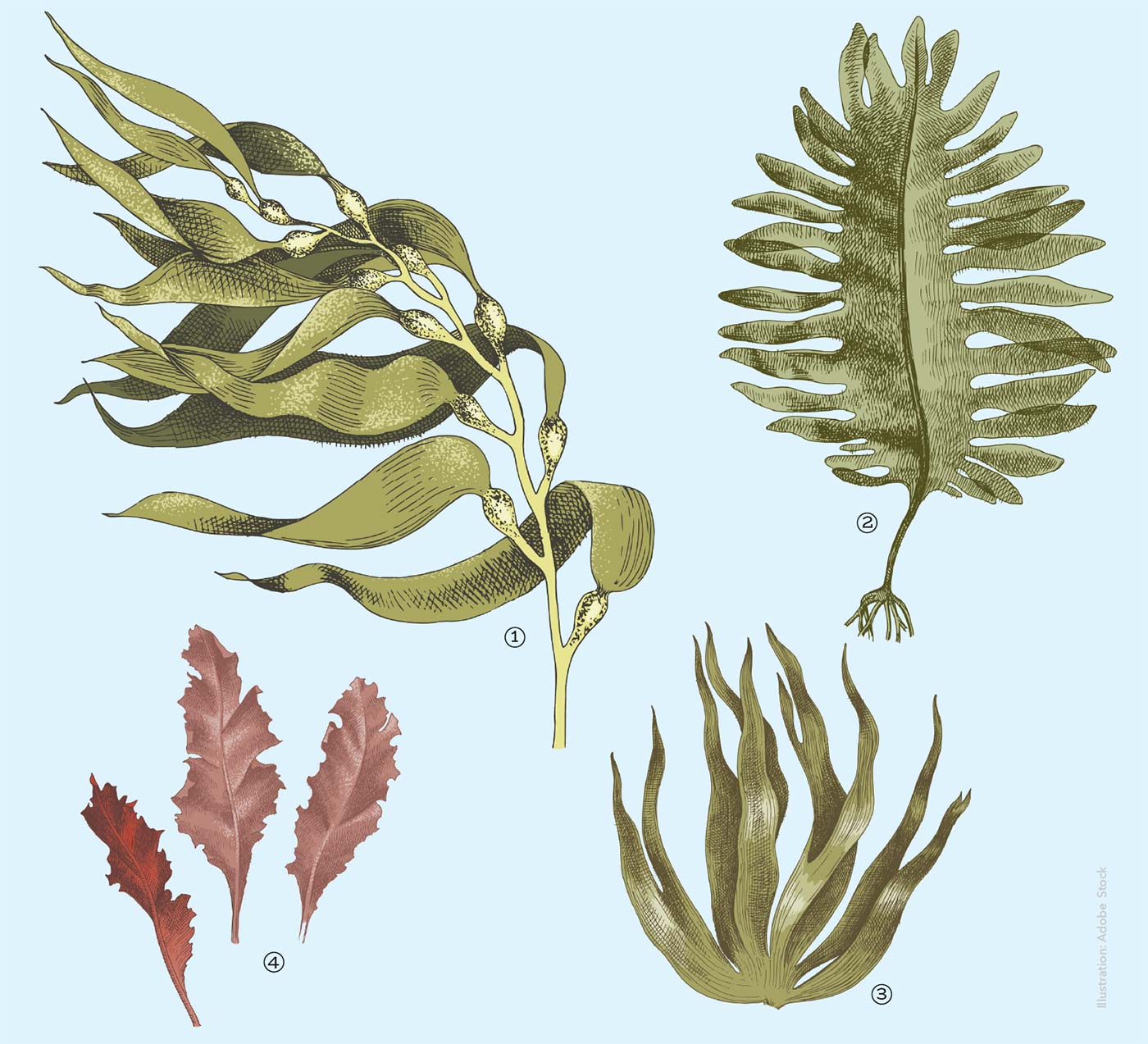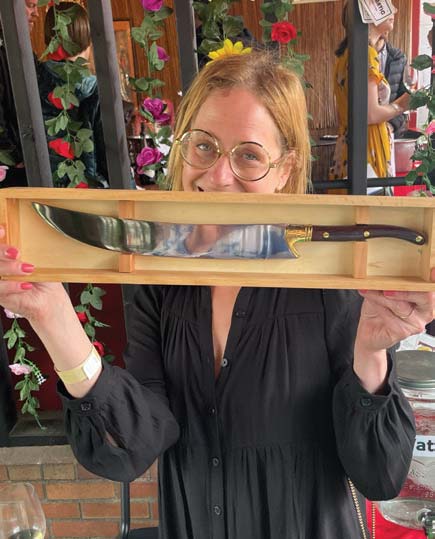Merroir is a term that Chef Maylin Chavez coined when talking about the flavors of all things aquatic. Taking a cue from the French terroir, Chavez’s portmanteau refers to the specific taste of the sea, more specifically the Pacific, where she sources ingredients for her roaming Baja-influenced seafood pop-up, Nácar.
While oysters might be the show’s star at Nácar, the supporting cast is an unexpected and entirely fascinating array of sea vegetables. “Kelp and seafood is a perfect combination. I love working with dulse, wakame, kombu and Oregon seaweed,” she says. Chavez is dedicated to cultivating a deeper relationship with sea vegetables.
With nori-wrapped rainbow rolls and sesame-spiked seaweed salads, for most folks, Japanese fare is by far the most accessible intro to the world of sea vegetables. Meals commence with bowls of miso soup made with a sea kelpbased broth garnished with wakame leaves.
In Korea, a soothing sea lettuce soup called miyeok-guk serves dual purposes. The first is aiding new mothers in postbirth recovery, and the second is celebrating birthdays by honoring the soup that nourishes family matriarchs.
Containing zinc, iodine, trace minerals and dietary fiber, sea vegetables are a complete superfood, Chavez explains, likening them to an aquatic kale or chard. She’s been championing them for several years, working them into dishes like wakame-cured Oregon albacore tostadas and banana leaf-wrapped sea vegetable tamales.
Locally, regenerative sea vegetable farm Blue Evolution has been working to bolster edible seaweed’s footprint by sustainably farming sea lettuce, kombu and wakame. Brand ambassador Alanna Kieffer first fell in love with sea vegetables in the underwater kelp forests of Catalina Island.
Now, she’s working with Blue Evolution’s marketing manager, Rachelle Hacmac, on Winter Waters, a statewide campaign to get more sea vegetables on menus. Winter Waters began with one seaweed dinner that snowballed into more than 20 events and collaborations, including sea lettuce and dulse-infused cocktails and beer, kombu cured salmon Benedict and dashi poached swordfish with wakame sauce.
Chefs are set on getting sea vegetables into the spotlight for several reasons.
At Southeast Portland tasting menu spot Quaintrelle, Chef Elijah Rivers uses two varieties of sea vegetables in his riff on tonkotsu ramen. The dish features cod seasoned with kelp salt roasted over Japanese charcoal and a pickled dulse sourced from the Oregon coast. Rivers finds dulse less assertive flavorwise than kelp or kombu, and loves the brightness and acid the pickled sea vegetable brings to the plate.
For Culinary Director Erik Englund of Flying Fish, cooking with sea vegetables offers an opportunity to employ the ingredients’ naturally occurring monosodium glutamate. Englund explains that it is flavor-enhancing properties that create a reaction. At Flying Fish, dishes like poke and a Korean seafood stew called jjamppong get an extra hit of umami thanks to the addition of sea vegetables. The verdict? “Oh, my god, I love it!” is the general consensus from Englund’s clientele. Just like sugar or salt, the savoriness that sea vegetables lend to dishes is incredibly well received. For a collaboration with Winter Waters, Englund prepared a dish of crab cakes with scallops served with a dulse salad. “It’s got more funk than standard herbs and a big texture that the palate is typically used to,” he says.
For those looking to bring sea vegetables into their home cooking routines, Englund suggests adding kombu or dulse to anything with some added earthiness. And as if sea vegetables’ flavor-boosting powers and superfood nutritional qualities weren’t enough, Englund suggests using any leftovers as an excellent addition to your skincare routine. Aside from being tasty and sustainable, sea vegetables make for an excellent exfoliant.
GET TO KNOW YOUR SEA VEGETABLES

Seaweed is the blanket term for a myriad of macroalgae living under the sea. Here’s a brief explainer on the seaweeds, or more appealingly sea vegetables, that are landing on plates and in glasses all over Portland.
1 Kelp aka Kombu
A species of brown algae that grows in underwater forests off of coastal Oregon. Kelp is known for its briny yet lightly sweet flavor and can be used fresh or dried. Kombu is most commonly found in dashi, the base broth for miso soup.
2 Wakame
Otherwise known as sea mustard, this relative of the kelp family hails from the chillier waters of the Pacific and has gained visibility in Japanese staples like pickled seaweed salad.
3 Sea Lettuce
Perhaps the most land vegetable-like of the seaweed family, this green algae resembles the leaves of romaine. It has a flavor profile that brings to mind cucumber with an oceanic tinge.
4 Dulse
This red algae has been used for both food and medicine in Ireland for centuries. Stateside, dried dulse chips are lauded for their health benefits, including fi er, protein and trace minerals.

